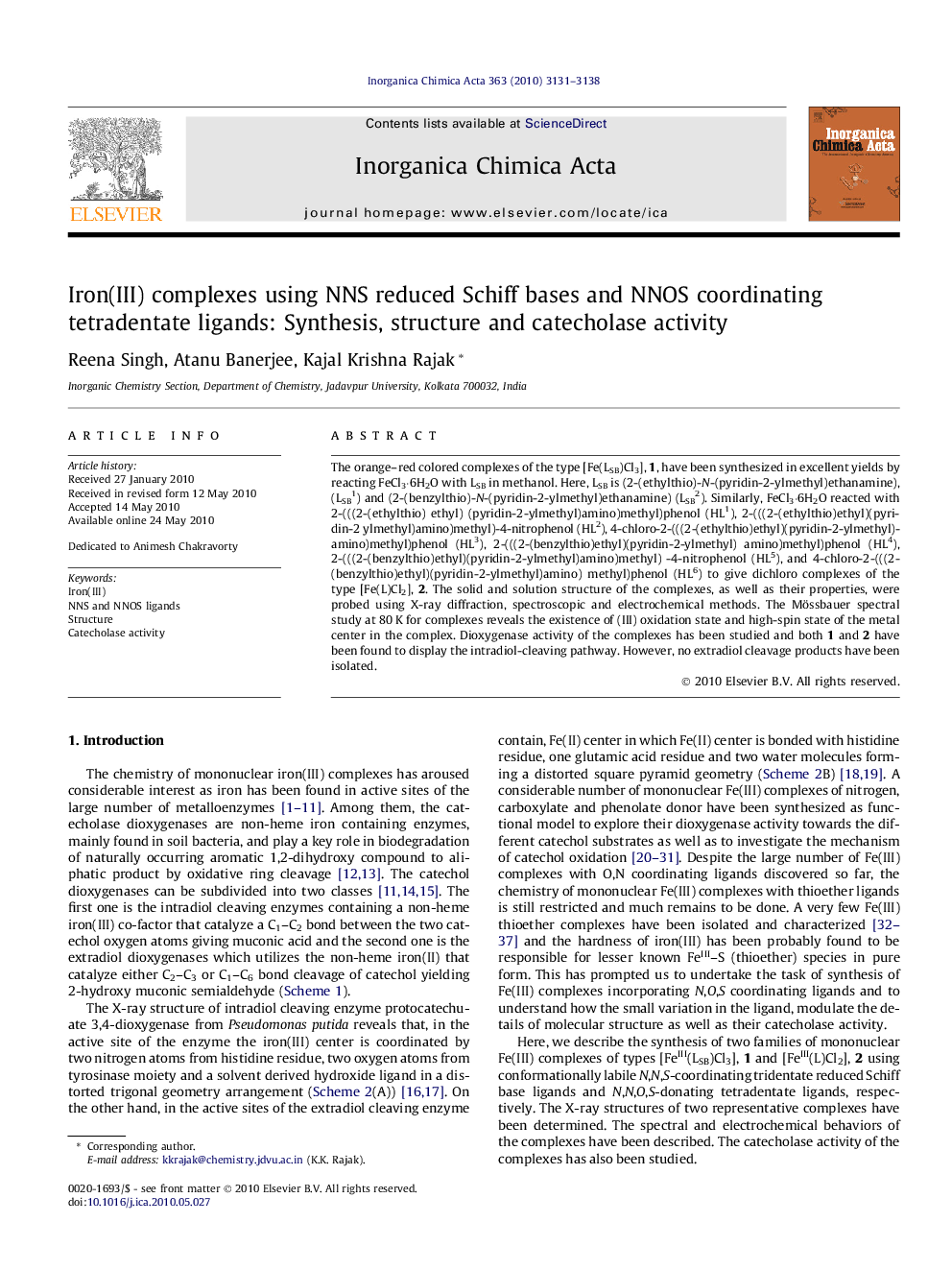| Article ID | Journal | Published Year | Pages | File Type |
|---|---|---|---|---|
| 1306932 | Inorganica Chimica Acta | 2010 | 8 Pages |
The orange–red colored complexes of the type [Fe(LSB)Cl3], 1, have been synthesized in excellent yields by reacting FeCl3·6H2O with LSB in methanol. Here, LSB is (2-(ethylthio)-N-(pyridin-2-ylmethyl)ethanamine), (LSB1) and (2-(benzylthio)-N-(pyridin-2-ylmethyl)ethanamine) (LSB2). Similarly, FeCl3·6H2O reacted with 2-(((2-(ethylthio) ethyl) (pyridin-2-ylmethyl)amino)methyl)phenol (HL1), 2-(((2-(ethylthio)ethyl)(pyridin-2 ylmethyl)amino)methyl)-4-nitrophenol (HL2), 4-chloro-2-(((2-(ethylthio)ethyl)(pyridin-2-ylmethyl)amino)methyl)phenol (HL3), 2-(((2-(benzylthio)ethyl)(pyridin-2-ylmethyl) amino)methyl)phenol (HL4), 2-(((2-(benzylthio)ethyl)(pyridin-2-ylmethyl)amino)methyl) -4-nitrophenol (HL5), and 4-chloro-2-(((2-(benzylthio)ethyl)(pyridin-2-ylmethyl)amino) methyl)phenol (HL6) to give dichloro complexes of the type [Fe(L)Cl2], 2. The solid and solution structure of the complexes, as well as their properties, were probed using X-ray diffraction, spectroscopic and electrochemical methods. The Mössbauer spectral study at 80 K for complexes reveals the existence of (III) oxidation state and high-spin state of the metal center in the complex. Dioxygenase activity of the complexes has been studied and both 1 and 2 have been found to display the intradiol-cleaving pathway. However, no extradiol cleavage products have been isolated.
Graphical abstractThe orange–red colored complexes of the type [Fe(LSB)Cl3], 1, have been synthesized in excellent yields by reacting FeCl3·6H2O with NNS coordinating tridentate reduced Schiff Base ligands. On the other hand, deep blue colored complexes of the type [Fe(L)Cl2], 2 were isolated by the reaction of FeCl3·6H2O with NNOS coordinating tetradentate reduced Schiff base ligands. The solid and solution structure of the complexes, as well as their properties, were probed using X-ray diffraction, spectroscopic and electrochemical methods. Dioxygenase activity of the complexes has been studied and both [Fe(LSB)Cl3], 1 and [Fe(L)Cl2], 2 have been found to display the intradiol-cleaving pathway. However, no extradiol cleavage products have been isolated.Figure optionsDownload full-size imageDownload as PowerPoint slide
